Epika Earth / Rare Terra
Epika Earth / Artisan
 This is the final installment for the most recent batch of Epika Earth incenses I received in my most recent Etsy order. They have so, so many more sticks and other goodies at their actual website and I am absolutely sure I liked most of their offerings enough to go for another order again in the future. There is something really warm and comforting about a lot of them. Perhaps its because so many of their incenses are essential oil mixes, but I like how these often create almost mythical libations, like you’re holding some amazing drink in your hand. The last group of these incenses are a couple that look like they are part of a Sacred line, a couple that are not part of any line and look like standards, and then a few backflow cones were also sent which are a bit more difficult to talk about as I don’t like the format while on the other hand these would likely be tremendously good cones if they weren’t.
This is the final installment for the most recent batch of Epika Earth incenses I received in my most recent Etsy order. They have so, so many more sticks and other goodies at their actual website and I am absolutely sure I liked most of their offerings enough to go for another order again in the future. There is something really warm and comforting about a lot of them. Perhaps its because so many of their incenses are essential oil mixes, but I like how these often create almost mythical libations, like you’re holding some amazing drink in your hand. The last group of these incenses are a couple that look like they are part of a Sacred line, a couple that are not part of any line and look like standards, and then a few backflow cones were also sent which are a bit more difficult to talk about as I don’t like the format while on the other hand these would likely be tremendously good cones if they weren’t.
 So first of all we have the Celebration of Life stick (part of the Sacred line), which is different but obviously related in an aromatic way to the Celebration of Life dhoop that I discussed in the previous installment. The stick, naturally, is a much simpler blend but what I really love about it is it’s almost like some sort of mystical root beer or sarsaparilla in scent. Or add in cream soda, ginger ale or a plain old “suicide.” It’s a concoction reminiscent of all these things and maybe none of them. So maybe just mystical soda. However, when I looked this up to link on the Etsy site it was gone, and seemingly “replaced” by a 1 year aged version of the same blend. So while I don’t have the ingredients list on the original, I would imagine they would be like the aged version: frankincense, myrrh, cistus, benzoin resinoid, styrax resinoid, cinnamon, rose petals, helichrysum flowers, golden copal, white copal, Rose Bulgaria, agarwood, and sandalwood. And like in previous incenses you can see the styrax and copal which have often helped to give Epika Earth incenses this concoction like feel. I would imagine aging this would work in a similar way to the Cocoa Pods incense in the line, which certainly broadens the complexity of their incense, so it’s not hard to imagine this would improve and it’s already good thing. In the original I also got touches of chocolate, the rose and some apricot (which had me leaning more towards jasmine until I look at the contents). It wasn’t as spicy as the dhoop but they both share the wonderful brown sugar note that helps sweeten up the “soda.”
So first of all we have the Celebration of Life stick (part of the Sacred line), which is different but obviously related in an aromatic way to the Celebration of Life dhoop that I discussed in the previous installment. The stick, naturally, is a much simpler blend but what I really love about it is it’s almost like some sort of mystical root beer or sarsaparilla in scent. Or add in cream soda, ginger ale or a plain old “suicide.” It’s a concoction reminiscent of all these things and maybe none of them. So maybe just mystical soda. However, when I looked this up to link on the Etsy site it was gone, and seemingly “replaced” by a 1 year aged version of the same blend. So while I don’t have the ingredients list on the original, I would imagine they would be like the aged version: frankincense, myrrh, cistus, benzoin resinoid, styrax resinoid, cinnamon, rose petals, helichrysum flowers, golden copal, white copal, Rose Bulgaria, agarwood, and sandalwood. And like in previous incenses you can see the styrax and copal which have often helped to give Epika Earth incenses this concoction like feel. I would imagine aging this would work in a similar way to the Cocoa Pods incense in the line, which certainly broadens the complexity of their incense, so it’s not hard to imagine this would improve and it’s already good thing. In the original I also got touches of chocolate, the rose and some apricot (which had me leaning more towards jasmine until I look at the contents). It wasn’t as spicy as the dhoop but they both share the wonderful brown sugar note that helps sweeten up the “soda.”
 Gentle Beast appears to be one of Epika Earth’s standard line (or perhaps Artisan) and an incense a bit closer to those I usually associate with the dipped style, although we’re still not in territory where inferior or synthetic oils are used thankfully. However, this does appear to be a mix of a lot of different things, it’s both somewhat amber-like, herbal and having a noticeable vanilla note (see the tonka bean below), all of which is blended with a strong fruity mix that at different times smells like berries, apples, pineapple, mango or pears (seriously, all in my notes!) Among this mix are somewhat combinate reminders of anything from sage to patchouli and agave cactus. One of the reasons I mention all of these things is that the ingredients list looks a lot different (the incense was sent as an addition to my order from the company). Those are listed as: organic calendula, organic lavender, white copal, styrax resin, golden copal, dragon’s blood, sweet coconut milk, bergamot, pink pepper, cinnamon leaf, jasmine, tonka bean, blue cypress, cedarwood atlas and musk. I was considering a different incense the morning I typed this, in the sense that lavender can often be a bit of a sneak ingredient in all sorts of sticks as it can vary in intensity or style, but fronting resins isn’t an unknown method to get a fruity effect. I’d imagine the bergamot and other resins probably don’t hurt (I’m reminded of the apple in dragon’s blood sticks as well) either. Anyway, as you might imagine you might have a bit of fun trying to pick things out from what is basically an herbal-laced fruit concoction. And this is better than a lot of those, if perhaps as lacking in distinction as other fruity dipped mixes, although the herbal feel prevents that from going too far. [Note that the page I linked to describes this as a Rare Terra incense, so this may a case similar to the Celebration of Life where there’s a formula upgrade, but I ended up with an original. So keep this in mind with the link.]
Gentle Beast appears to be one of Epika Earth’s standard line (or perhaps Artisan) and an incense a bit closer to those I usually associate with the dipped style, although we’re still not in territory where inferior or synthetic oils are used thankfully. However, this does appear to be a mix of a lot of different things, it’s both somewhat amber-like, herbal and having a noticeable vanilla note (see the tonka bean below), all of which is blended with a strong fruity mix that at different times smells like berries, apples, pineapple, mango or pears (seriously, all in my notes!) Among this mix are somewhat combinate reminders of anything from sage to patchouli and agave cactus. One of the reasons I mention all of these things is that the ingredients list looks a lot different (the incense was sent as an addition to my order from the company). Those are listed as: organic calendula, organic lavender, white copal, styrax resin, golden copal, dragon’s blood, sweet coconut milk, bergamot, pink pepper, cinnamon leaf, jasmine, tonka bean, blue cypress, cedarwood atlas and musk. I was considering a different incense the morning I typed this, in the sense that lavender can often be a bit of a sneak ingredient in all sorts of sticks as it can vary in intensity or style, but fronting resins isn’t an unknown method to get a fruity effect. I’d imagine the bergamot and other resins probably don’t hurt (I’m reminded of the apple in dragon’s blood sticks as well) either. Anyway, as you might imagine you might have a bit of fun trying to pick things out from what is basically an herbal-laced fruit concoction. And this is better than a lot of those, if perhaps as lacking in distinction as other fruity dipped mixes, although the herbal feel prevents that from going too far. [Note that the page I linked to describes this as a Rare Terra incense, so this may a case similar to the Celebration of Life where there’s a formula upgrade, but I ended up with an original. So keep this in mind with the link.]
 The Sacred Amber is a quiet but familiar amber incense. It still has the concoction-like mix of most of the incenses in the Epika Earth catalog I have tried. The issue of course is that I would not normally describe amber in the context of essential oils in at least that so many amber incenses or notes often could be considered dry, powdery or otherwise (often even if perfumes are reaching for this). But with that said this does have a noticeable amber note. I wondered if this might have been an older stock as there is a slight charcoal note that peaks through that must be from the base. And hey when you look at the ingredients (rock rose extract, patchouli, vetiver, sandalwood, frankincense, myrrh, liquidamber, cedarwood, amber resin, black pepper) you can see that the amber scents do lean in the concoction direction. The positives of this one is that it’s a very gentle scent but I think that allows some of the ingredients to maybe push away from the amber a bit. All of that is OK, it’s more saying that while this is a nice incense, I’d describe it more as an amber variant, than something purer than that. But we’re still talking about a scent pretty close to familiar dipped incenses rather than the more breathtaking experiments we’ve discussed previously.
The Sacred Amber is a quiet but familiar amber incense. It still has the concoction-like mix of most of the incenses in the Epika Earth catalog I have tried. The issue of course is that I would not normally describe amber in the context of essential oils in at least that so many amber incenses or notes often could be considered dry, powdery or otherwise (often even if perfumes are reaching for this). But with that said this does have a noticeable amber note. I wondered if this might have been an older stock as there is a slight charcoal note that peaks through that must be from the base. And hey when you look at the ingredients (rock rose extract, patchouli, vetiver, sandalwood, frankincense, myrrh, liquidamber, cedarwood, amber resin, black pepper) you can see that the amber scents do lean in the concoction direction. The positives of this one is that it’s a very gentle scent but I think that allows some of the ingredients to maybe push away from the amber a bit. All of that is OK, it’s more saying that while this is a nice incense, I’d describe it more as an amber variant, than something purer than that. But we’re still talking about a scent pretty close to familiar dipped incenses rather than the more breathtaking experiments we’ve discussed previously.
 Stormfire Tea has the concoction idea right at the forefront. It is sort of in the same direction as the Shoyeido Xiang-Do (red) Tea, although this does not have the same sort of tea leaf resolution that the Shoyeido stick has. In some ways it’s not all that far from the Sacred Amber. The reddish color hints more at an herbal spiced tea and like the Sacred Amber it has a mild spicy middle to it. Interestingly, the ingredients include organic lavender flowers, organic white tea, cedar, birch tar resinoid, golden copal, styrax and sandalwood, and so the incense’s spicy notes don’t seem to come from the usual suspects as much, although I’d guess the woods probably provide some of these things. The cedar is pretty obvious in the mix, providing something of a southwestern note to the incense and the copal and styrax obviously help with pushing this over to an actual tea scent. It’s probably not my favorite of the Epika Earth incenses that remind me of drinks, but they still always do a good job with them and this will likely be found comforting and warming.
Stormfire Tea has the concoction idea right at the forefront. It is sort of in the same direction as the Shoyeido Xiang-Do (red) Tea, although this does not have the same sort of tea leaf resolution that the Shoyeido stick has. In some ways it’s not all that far from the Sacred Amber. The reddish color hints more at an herbal spiced tea and like the Sacred Amber it has a mild spicy middle to it. Interestingly, the ingredients include organic lavender flowers, organic white tea, cedar, birch tar resinoid, golden copal, styrax and sandalwood, and so the incense’s spicy notes don’t seem to come from the usual suspects as much, although I’d guess the woods probably provide some of these things. The cedar is pretty obvious in the mix, providing something of a southwestern note to the incense and the copal and styrax obviously help with pushing this over to an actual tea scent. It’s probably not my favorite of the Epika Earth incenses that remind me of drinks, but they still always do a good job with them and this will likely be found comforting and warming.
 Epika Earth were also kind enough to send no less than three different kinds of backflow cones. As I offered to review their incenses prior to their seeing the information on our website, I thought I’d use this opportunity to talk about these types of cones first as they’ve grown in popularity since they started showing up however many years back. The simple idea for a backflow cone is a hole is drilled down the center and “something” is added to the mix in order to make the smoke heavy enough to come down through the hole and drift slowly down any number of artistically designed backflow holders. It’s absolutely understandable why people would think this is cool, as smoke pouring from a ceramic chimney or dragon’s mouth is a neat effect. I even bought a cool dragon backflow holder which I managed to break in the middle of these reviews, chipping off just the right spot (one of the dragon wings) that should have held the smoke in. But the thing is, even in practice you have to do a lot of shifting and have a lot of patience for the smoke of a burning backflow cone to make it all the way down to the bottom of a cascade. For me the smoke never got farther than the first slide after the dragon’s mouth and I think I got one cone to get all the way down to the bottom once.
Epika Earth were also kind enough to send no less than three different kinds of backflow cones. As I offered to review their incenses prior to their seeing the information on our website, I thought I’d use this opportunity to talk about these types of cones first as they’ve grown in popularity since they started showing up however many years back. The simple idea for a backflow cone is a hole is drilled down the center and “something” is added to the mix in order to make the smoke heavy enough to come down through the hole and drift slowly down any number of artistically designed backflow holders. It’s absolutely understandable why people would think this is cool, as smoke pouring from a ceramic chimney or dragon’s mouth is a neat effect. I even bought a cool dragon backflow holder which I managed to break in the middle of these reviews, chipping off just the right spot (one of the dragon wings) that should have held the smoke in. But the thing is, even in practice you have to do a lot of shifting and have a lot of patience for the smoke of a burning backflow cone to make it all the way down to the bottom of a cascade. For me the smoke never got farther than the first slide after the dragon’s mouth and I think I got one cone to get all the way down to the bottom once.
Whatever is the case, information on backflow cones seems pretty confusing on the internet. There are lots of claims of these types of cones that they don’t use any chemicals and yet there has to be a difference between smoke that rises and smoke that sinks (and usually stinks). I would imagine this is just chemistry and physics. There also has to be some sort of reasoning for the abominable smells during and left after the burning of some of these cones on a backflow burner. The ones that came with my burner were absolutely awful and I even tried a Tibetan backflow cone which had the exact same issue. And then you can read on internet, recipes for these cones that are made no differently from a regular cone, at least as far as I can tell. My experience with backflow cones is not widespread but I can tell you I’ve never smelled one that didn’t have some sort of additive, whatever it may be.
And that’s no different for these three Epika Earth cones, although I will say I didn’t notice the same sort of foulness left from them that I did with the burner samples or the Tibetan incense I mentioned above. What I felt was disappointed simply because the mixes were actually really nice on these, but there seemed to be something in the mix that I associated with the sort of alcohol scent you can get with some of the oils except quite a bit stronger. For like the tip of the cone you’re good but then once it gets, I assume, to where the drilled hole goes down each cone, it started to get a bit too much for my tastes. Now I’ll be fair I’ve had this happen with a lot of non-backflow cones as well. I’ve never thought the cone was a satisfying format for an incense and it often felt this way perhaps because you need more makko or binder so the cone keeps its shape, or at least nearly every cone I’ve used gets irritating by the time it’s wide and down to the base. So I am probably not a cone’s intended audience.
And so reviewing three or four cones of these is not fully possible, both because there is a strength here that overwhelms any subtleties but also because that strength overwhelms me as well (and let me remind you I am usually OK with some of the loudest Indian incenses on the market). It is a strange experience going from wow that’s a really lovely scent to throat irritation and stinging eyes all in one cone burn, but that’s what each one of these does. The Angel Blood (dragon’s blood, styrax and patchouli) cones were first and I honestly absolutely loved the sort of dragon’s blood and styrax sweet “candy” mixed with some earthier patchouli. At first I was like wow someone made a backflow cone I really like, but then it ended at the first dragon slide and I got overwhelmed. I then broke the burner and had to sample the Rhubarb Berry and Oakmoss cone on one of my ash burners. Again at first I was really impressed, as all three (?) scents (the aroma profile is described as agave covered berries, rhubarb and black plum with highlights of fir needle and oakmoss) in a wonderful mix were really clear. Perhaps burning it away from a backflow burner helped mitigate the strength as it wound down but I was still sensing a lot of heavy alcohol and some sort of unknown scent towards the end that wasn’t agreeing with me. Saved for last since I don’t normally go for palo santo was the Winter Juniper & Palo Santo cone. This aroma profile is described as palo santo wood and juniper berries freshly thawed after a winter freeze. Triple coated with palo santo wood powder, sandalwood powder, golden copal resin and sweet myrrh. Strangely though on this one I don’t really get juniper or palo santo at all, which struck me as odd as the ingredients list on an Epika Earth incense can usually easily be identified. But again it started quite pleasant and was literally stinging my eyes by the end of it.
So to sum this up, these last three cones are obviously for people who love backflow cones and in that context they’re certainly better than nearly every other cone I’ve tried in the style, they’re clearly artisan and made with love. And of course I’d reiterate that I really enjoyed nearly every stick and dhoop I reviewed in all three installments, enough that I made an exception to my no dipped incense reviews rule. Epika Earth have certainly carved out a unique space in the incense community and I look forward to trying more of their scents. If you have tried any other of their incenses and wish to contribute, please post in the thread below!
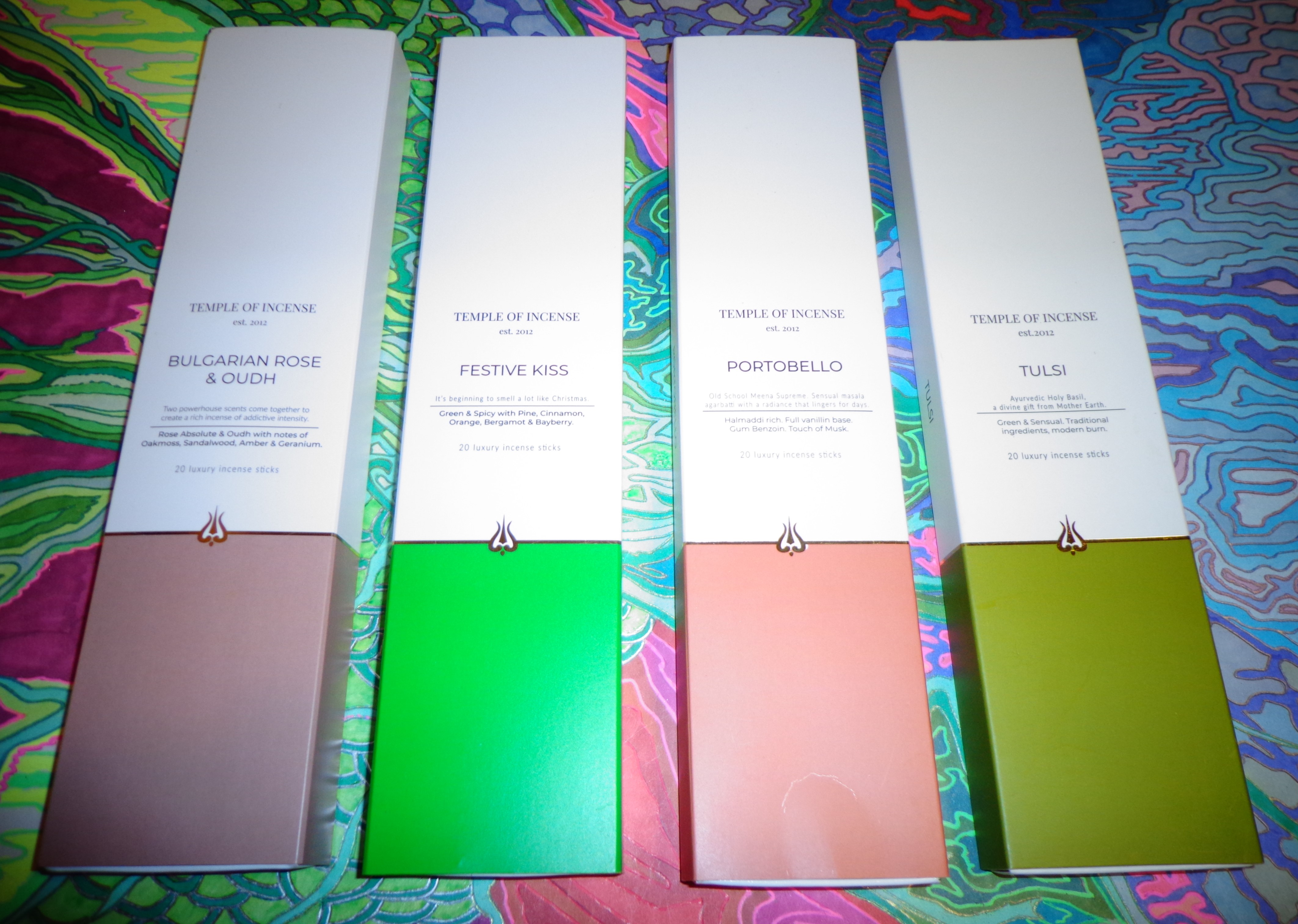 Please note that if you are new to ORS, we have done a wide-ranging number of reviews on the absolutely fabulous Temple of Incense line, all of which can be found by either clicking on the Temple of Incense link under Incense>India or checking out
Please note that if you are new to ORS, we have done a wide-ranging number of reviews on the absolutely fabulous Temple of Incense line, all of which can be found by either clicking on the Temple of Incense link under Incense>India or checking out 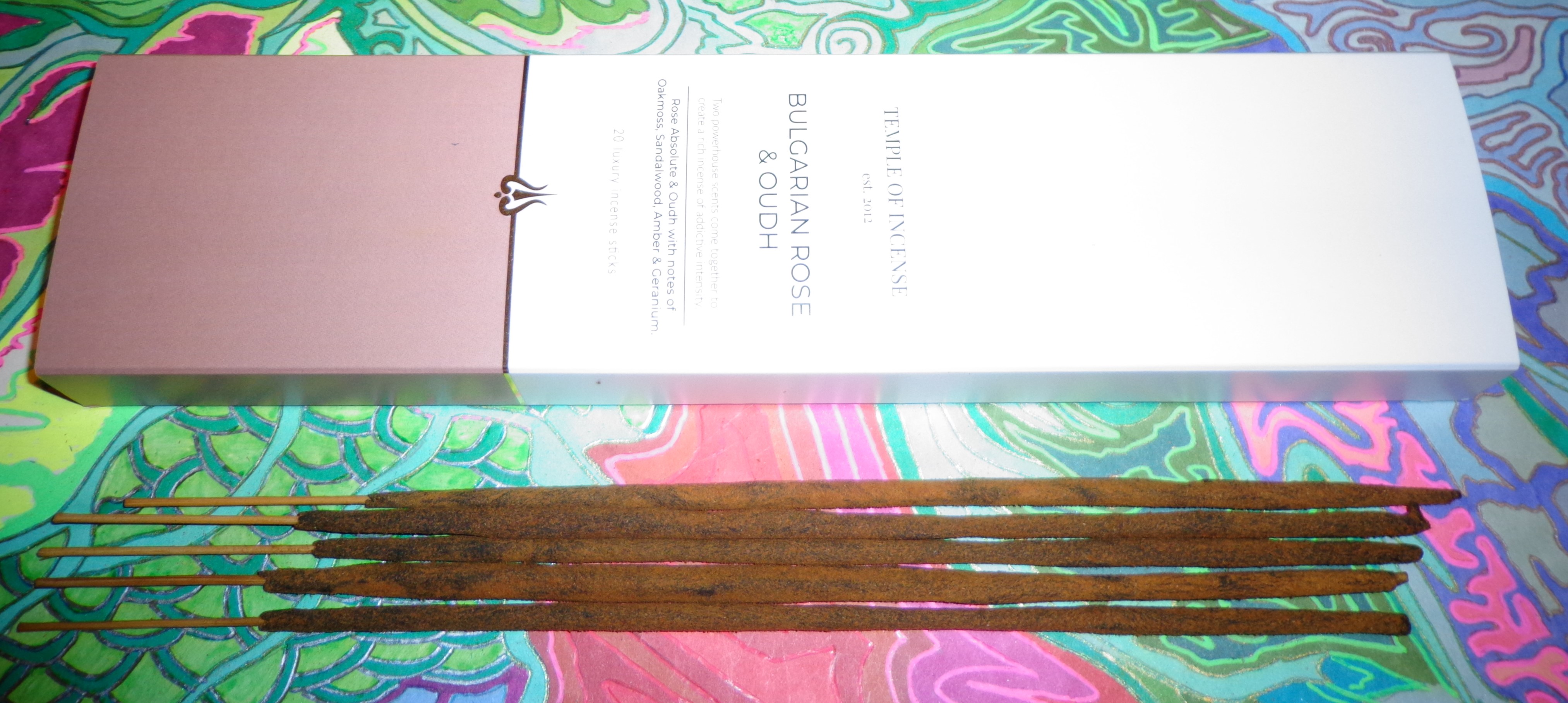 The Aydees announced their new
The Aydees announced their new 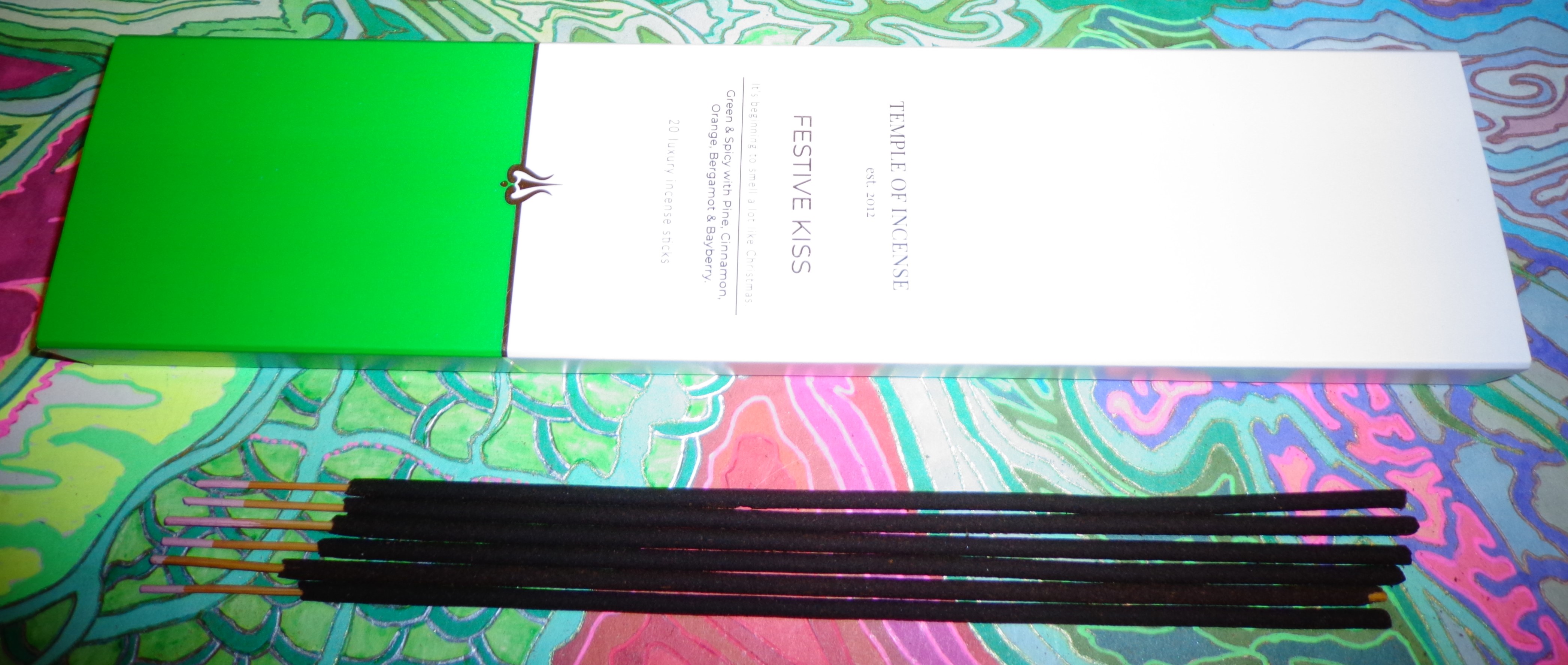
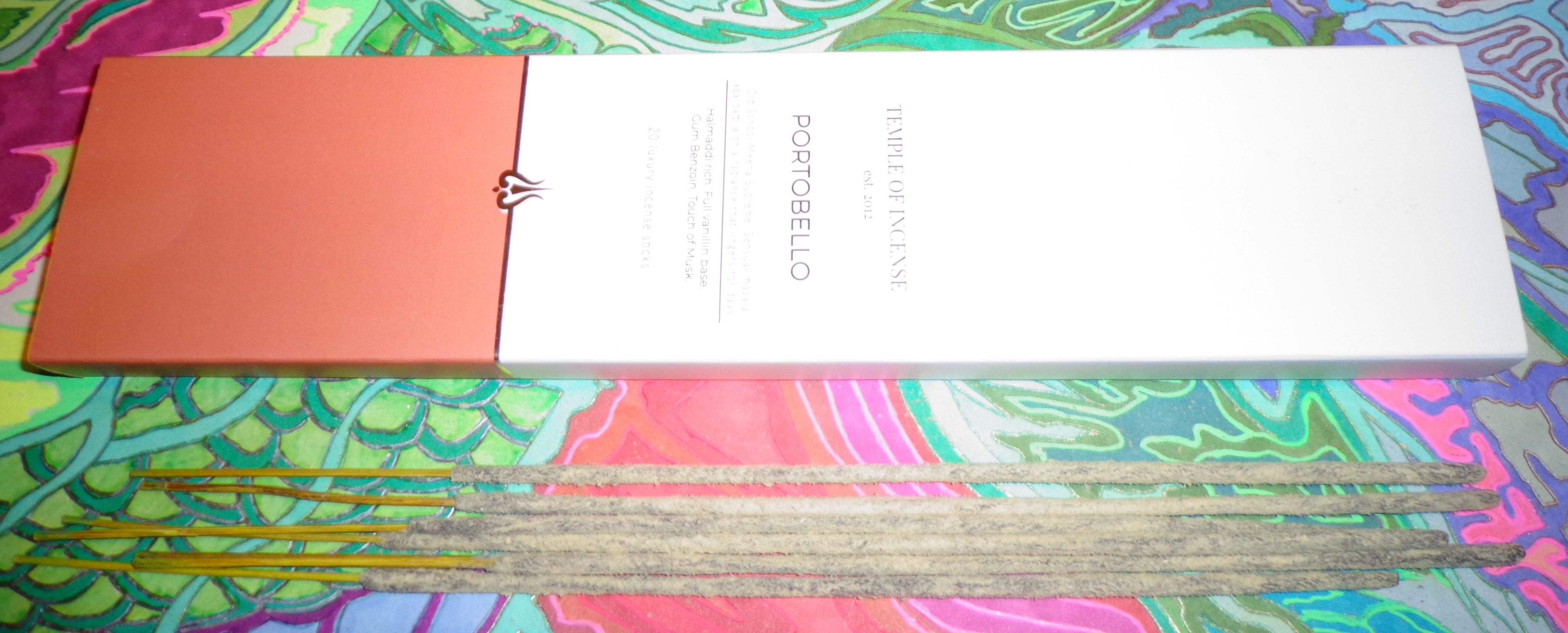
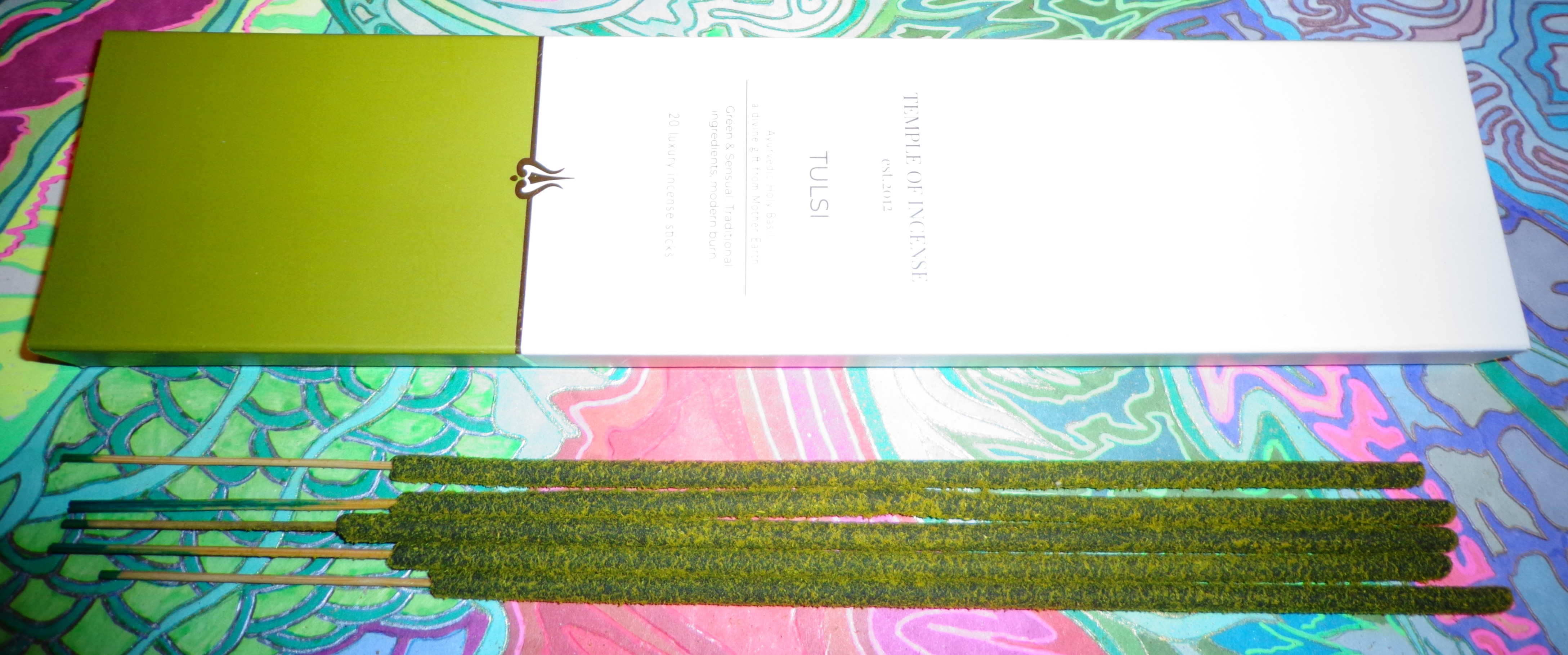 I nearly went to publication with the above three, but the arrival of a couple sticks of
I nearly went to publication with the above three, but the arrival of a couple sticks of  Kousaido is a Japanese company of a very modern bent, carrying many of the same sorts of lines you see with Nippon Kodo. So I’ll be straight up when I say that these styles aren’t usually to my taste and this review is of a few places I cast my net looking for some things I thought I might go for or to at least get some general overview of the company. Like in Nippon Kodo and even some of Shoyeido’s lines, some of these incenses are the sort of short 2 1/2 to 3/4 inch, slightly thicker sticks that tend to be machine produced and laden with perfumed aromas. They are perhaps not targeted at traditional incense fans, although one of the boxes here perhaps presents a slightly closer pitch to wood-based scents.
Kousaido is a Japanese company of a very modern bent, carrying many of the same sorts of lines you see with Nippon Kodo. So I’ll be straight up when I say that these styles aren’t usually to my taste and this review is of a few places I cast my net looking for some things I thought I might go for or to at least get some general overview of the company. Like in Nippon Kodo and even some of Shoyeido’s lines, some of these incenses are the sort of short 2 1/2 to 3/4 inch, slightly thicker sticks that tend to be machine produced and laden with perfumed aromas. They are perhaps not targeted at traditional incense fans, although one of the boxes here perhaps presents a slightly closer pitch to wood-based scents.  You usually don’t see moderns in pawlonia boxes, but
You usually don’t see moderns in pawlonia boxes, but  These next two boxes are actually made up of multiple scents and are sampler boxes whose contents don’t appear to be imported separately. So before we go back to the short stick format, we’re going to discuss the
These next two boxes are actually made up of multiple scents and are sampler boxes whose contents don’t appear to be imported separately. So before we go back to the short stick format, we’re going to discuss the  The next Kousaido grouping falls under the name “
The next Kousaido grouping falls under the name “ I wanted to pause for a second and comment a bit on the overall Temple of Incense line and how it kind of relates to my understanding and I’ll thank Stephen here for some internal conversations on this very subject. I’ve talked quite a bit about how in the 90s masala recipes changes drastically in style, particularly the move away from halmaddi in incenses. The thing I probably didn’t notice as much is that some of these incenses moved into different masala styles, but there seems to have been a greater move towards charcoal bases, more than I probably expected. Charcoals often have dusting that tend to hide the color and some charcoals are actually hybrids with masalas themselves so it’s a little bit of a guessing game with what is what but you can usually tell by how firm the sticks are. So I feel to some extent the old language I was using has maybe not kept up so well with some of these changes. Part of it is that I think some of the charcoals or hybrids do a fairly good job now of mimicking incenses that were previously in a more masala or even champa/halmaddi style in the past. Bengal Beauty was one I was thinking of burning it last night, that it still attempts to go for what is overall a very sweet scent, because those lavender tipped sticks in the past actually did have halmaddi of a sort. But I wanted to mention all of this because 1) the Temple of Incense line actually seems to be largely charcoal or hybrid, but 2) their charcoals are usually so good that it’s easy to overlook that they are. So I’ll also add that the difference between what we cover here is that I try to avoid dipped charcoal sticks, and not as much charcoal sticks that are created differently or hybridized. After all even a Madhvadas line like Pure incense uses some charcoal in their sticks and it’s not uncommon in Japanese incenses either.
I wanted to pause for a second and comment a bit on the overall Temple of Incense line and how it kind of relates to my understanding and I’ll thank Stephen here for some internal conversations on this very subject. I’ve talked quite a bit about how in the 90s masala recipes changes drastically in style, particularly the move away from halmaddi in incenses. The thing I probably didn’t notice as much is that some of these incenses moved into different masala styles, but there seems to have been a greater move towards charcoal bases, more than I probably expected. Charcoals often have dusting that tend to hide the color and some charcoals are actually hybrids with masalas themselves so it’s a little bit of a guessing game with what is what but you can usually tell by how firm the sticks are. So I feel to some extent the old language I was using has maybe not kept up so well with some of these changes. Part of it is that I think some of the charcoals or hybrids do a fairly good job now of mimicking incenses that were previously in a more masala or even champa/halmaddi style in the past. Bengal Beauty was one I was thinking of burning it last night, that it still attempts to go for what is overall a very sweet scent, because those lavender tipped sticks in the past actually did have halmaddi of a sort. But I wanted to mention all of this because 1) the Temple of Incense line actually seems to be largely charcoal or hybrid, but 2) their charcoals are usually so good that it’s easy to overlook that they are. So I’ll also add that the difference between what we cover here is that I try to avoid dipped charcoal sticks, and not as much charcoal sticks that are created differently or hybridized. After all even a Madhvadas line like Pure incense uses some charcoal in their sticks and it’s not uncommon in Japanese incenses either. So
So  And also somewhat coincidentally, the
And also somewhat coincidentally, the 
 Finally, with more of a mix of specific elements there is
Finally, with more of a mix of specific elements there is
You must be logged in to post a comment.